Thursday, February 12
I rolled into Enchanted Rock State Natural Area around 10:15. As expected, it was pretty quiet. The combination of a morning visit, during the week, in the off season pretty much insured that. During the peak of visitation the park reaches capacity (in terms of parking) and frequently closes on weekends (sometimes as early as 11 a.m.) Reopening usually occurs at 5 p.m. That many people sounds hellish to me.
I parked and went into the visitor's center/fee station, paid my 6 bucks, got a map and brochure and looked over the interesting interpretive geology display, complete with some nice crystals.
Click on these photos for a higher resolution.
Will be slow with dial-up connection.
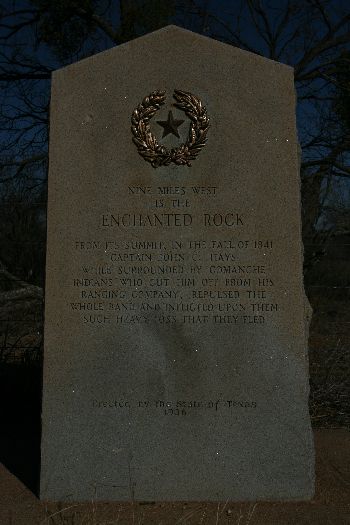
This monument is at the intersection of SR 16 and Ranch Road 659. It tells how Captain John Hays fought off some Comanche Indians who had surrounded him at the summit.
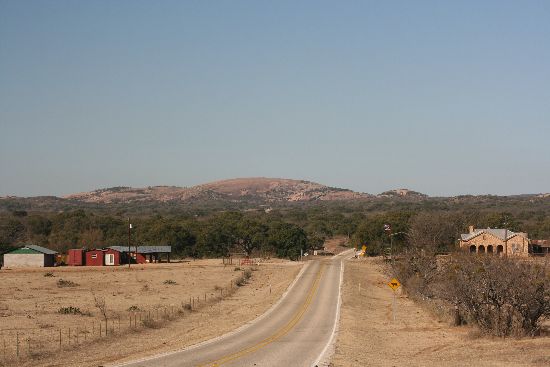
My first look at the huge, pink granite dome. Impressive.
The name Enchanted Rock derives from Spanish and Anglo-Texas interpretations of Indian legends and related folklore, which attribute magical and spiritual properties to the ancient landmark. According to one nineteenth-century writer, "the Indians had a great awe amounting almost to a reverence" for the rock.
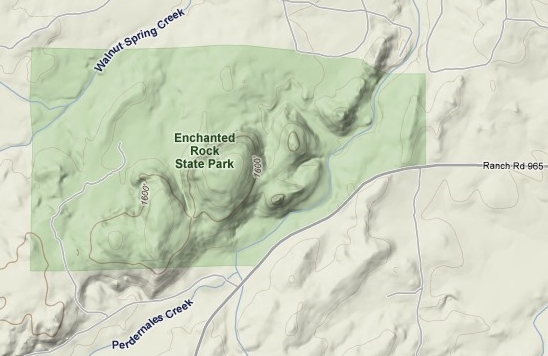
As this terrain model shows, the elevations are not dramatically different, only about 385' from Sandy Creek to the top of the dome. But, it's shear size and dominance on the landscape makes up for what it lacks in height.
Source: © Google Maps
NOTE: Sandy Creek is incorrectly labelled as Perdernales Creek in the above map.
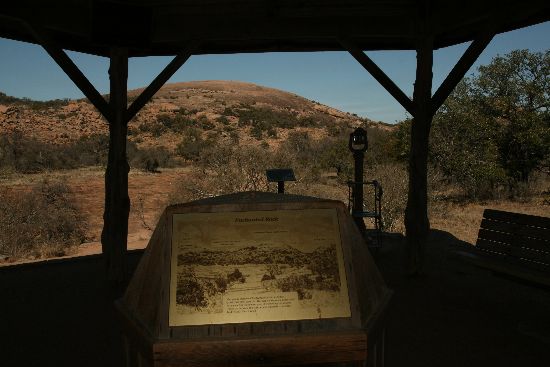
This ramada sits on the bluff above Sandy Creek and provided a goof view of the dome and the trail which climbs it.
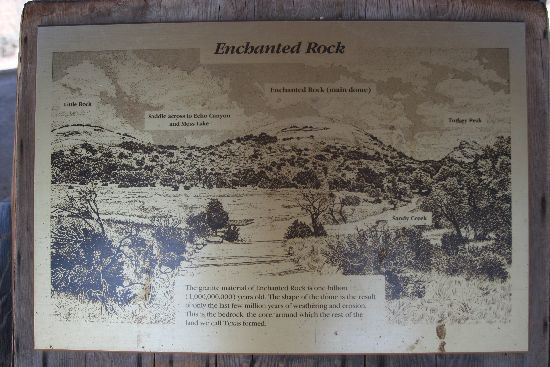
This nice interpretive sign give some spacial perspective to the area and the following information about the geology.
"The granite of Enchanted Rock is one billion (1,000,000,000) years old. The shape of the dome is the result of only the last few million years of weathering and erosion.
This is the bedrock, the core, around which the rest of the land we call Texas formed."
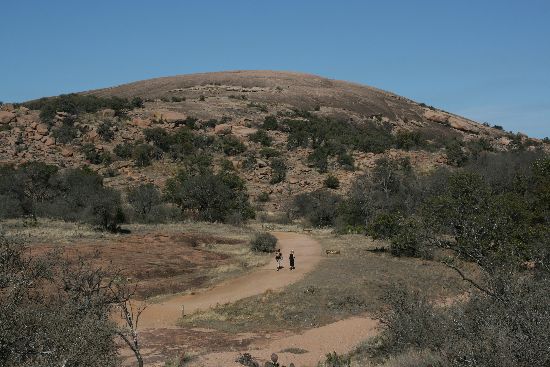
Multiply these two hikers by 100 and that might be a more typical view during the busy times of the year.
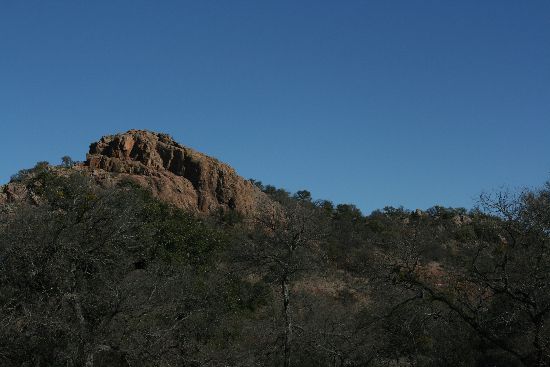
I started out on the Loop trail which at the beginning turns to the east diving one a good view of Buzzards Roost.
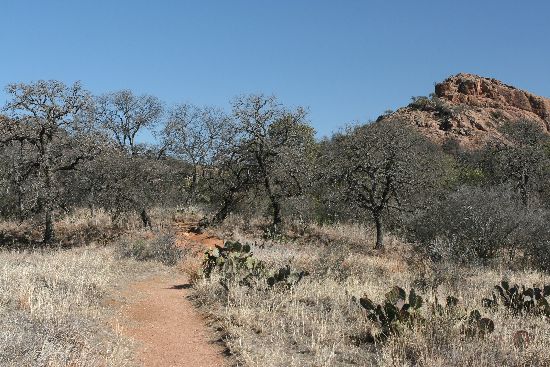
Like much of the rest of the landscapes I have seen while in Texas this was a bit austere, and very dry. But, there are more of those beautiful Oaks!
That is Buzzard's Roost on the right.
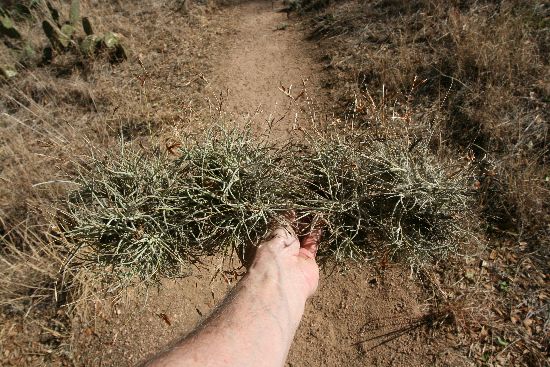
The nite before there had been a big blow across much of Texas. This knocked many small branches from the trees. Many of them were festooned with Tillandsia which is an epiphytic plant. This particular branch, about 3/8" in diameter, was so densely covered I found it difficult to find the bark into which the plants roots had anchored.
Tillandsia are epiphytes and need no soil because water and nutrients are absorbed through the leaves. The roots are used as anchors only. Reproduction is by seeds or by offsets called "pups". A single plant could have up to a dozen pups. Indoor arrangement of six Tillandsia plants mounted on a log section.
Although not normally cultivated for their flowers, some Tillandsia will bloom on a regular basis. In addition, it is quite common for some species to take on a different leaf colour (usually changing from green to red) when about to flower. This is an indication that the plant is monocarpic (flowers once before dying) but offsets around the flowering plant will continue to thrive.
Temperature is not critical, the range being from 32°C down to 10°C. They are sensitive to frost, except for the hardiest species, T. usneoides, which can tolerate night-time frosts down to about -10°C.
Tillandsia is a primary ingredient in Allerplex, a Standard Process herbal supplement to treat pollen allergies.
Source: Wikipedia
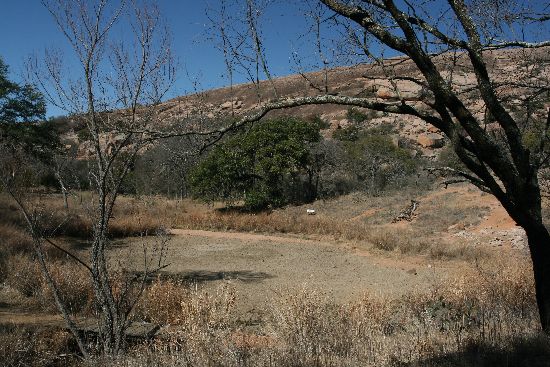
This is the Frog Pond. When I visited in 2005 it was full.
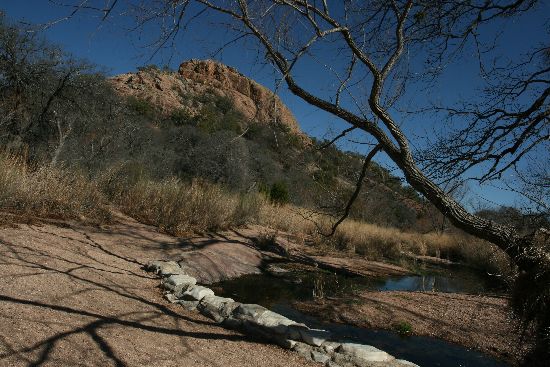
The recent rains were not enough to water the frog pond, but, there was a bit of water flowing in Sandy Creek.
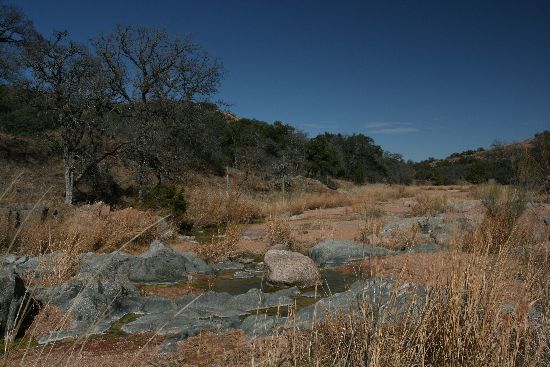
The small trickle of water shown in these two pictures give promise of the transformation to come when the rains finally arrive.
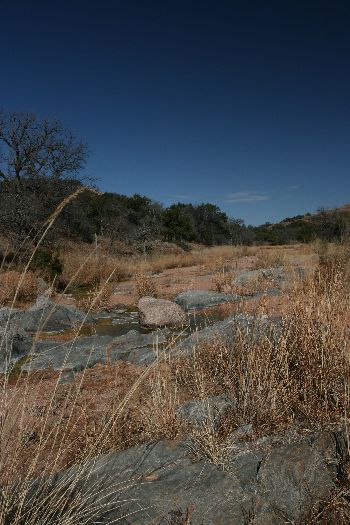
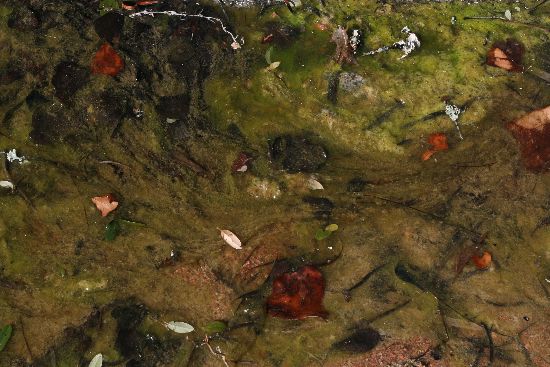
An interesting soup in one of the still pools.
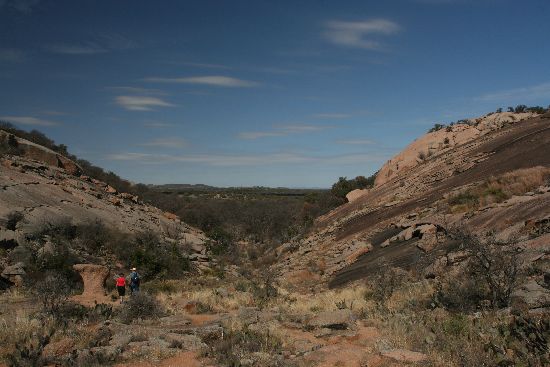
My route eventually took me to the Echo Canyon trail on the west flank of the dome. Here I saw two of the 4 people I had seen on my hike thus far. They are looking at a strangely shaped obelisk which seems to have been dropped out of nowhere.
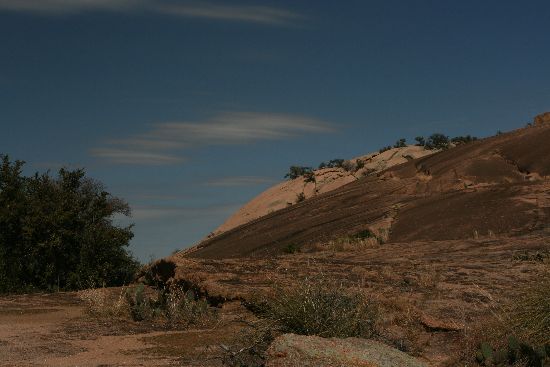
The differing colors in the rock made me wonder what had happened to cause it.
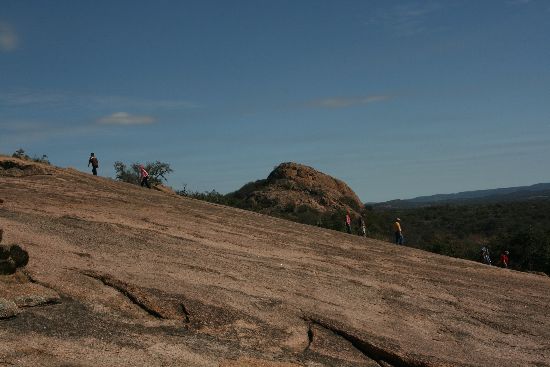
As I scrambled at to the canyon which let to the Summit Trail I got a look at where everyone else was.
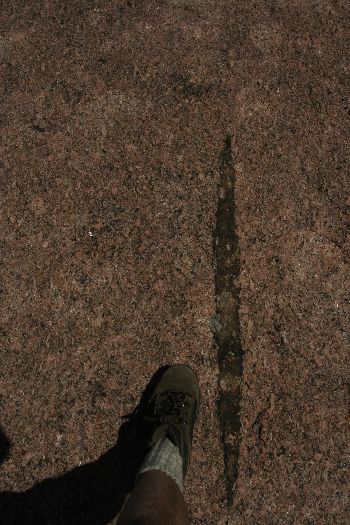
Another curiosity. What could have caused this?
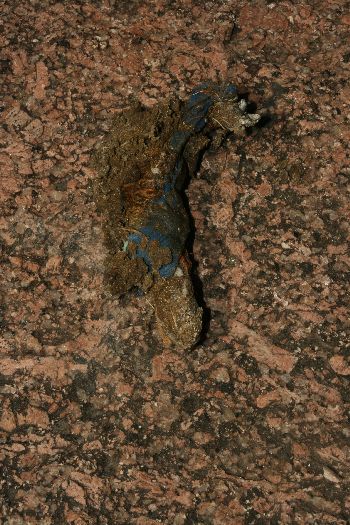
I don't normally take pictures of poop, unless it is from bats. But this 5" long scat caught my eye when I noticed the piece of fabric embedded in it. What had eaten what!?
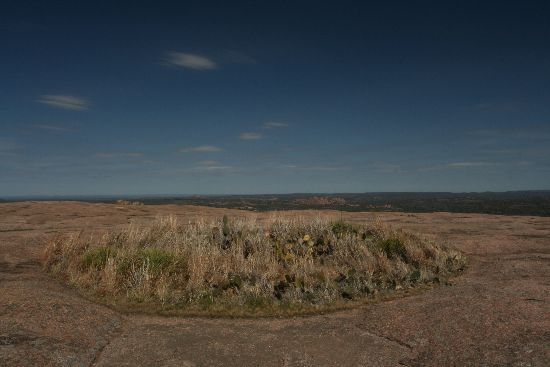
One of the depression near the summit of the done which had collected soil over the years and formed a small garden. A number of these depressions are soiless and when the collect water they form vernal pools.
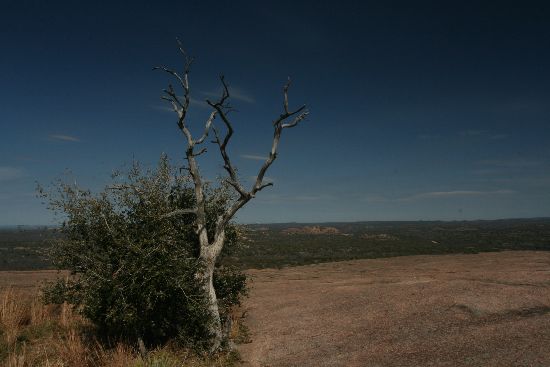
Off into the distance one can just make out yet another prominent rock formation.
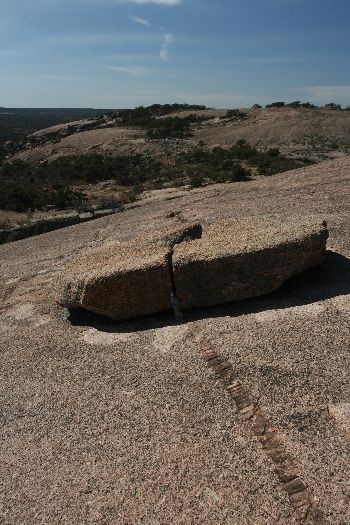
The are rocks strewn about all over the place on the dome. Did they move down from the upper part of the dome over the years? Or are they a more resistant part of the granite which weather more slowly than the surrounding rock?
And what about the long and sinuous band that seems to slice right through it?
Curious...
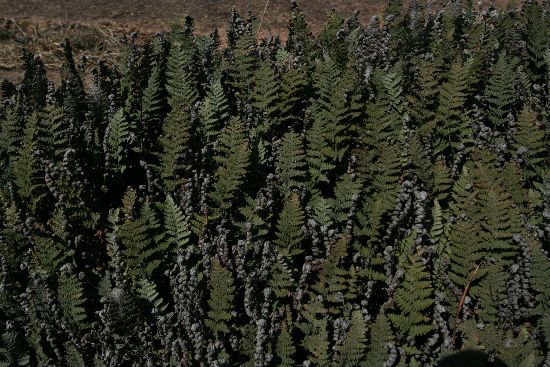
Here is very clear evidence of recent rain. These Xeric ferns are beginning to perk back up and new fronds are pushing up from rhizomes below.
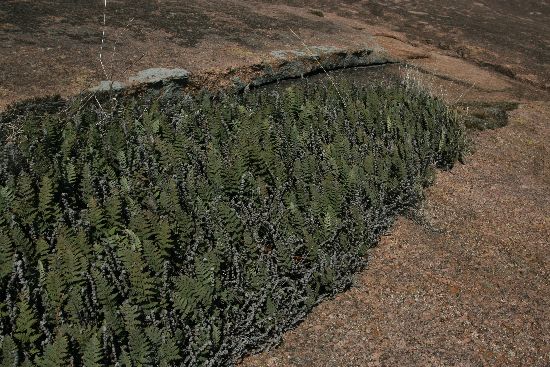
I counted all the fern fronds.
There were 1,487 of them. Just kidding!!!
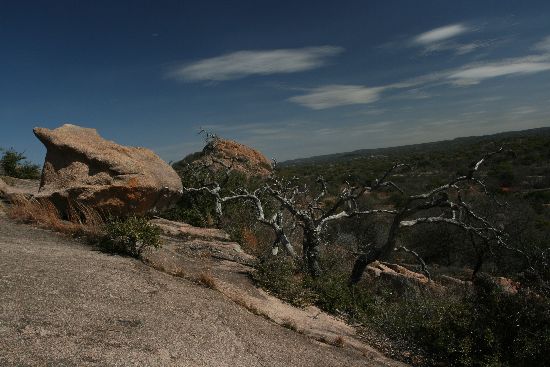
Beautiful views everywhere.
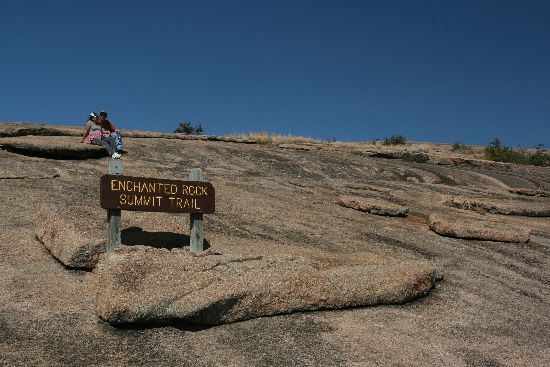
Two visitors take a breather on the steep climb to the summit.
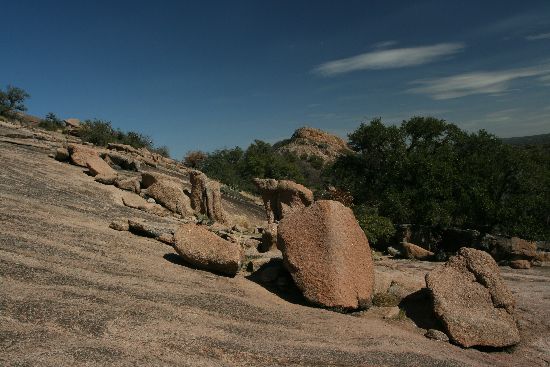
More of those strangely shaped obelisks.
A great hike and one I look forward to doing again. Now it was on to Llano to find a bed for the night. I settled on a small mom and pop place - The Llano Motel at $45/nite with tax. It has about 15 rooms. Mine is small, but clean and everything works, including the microwave which I put to good used "making" dinner.
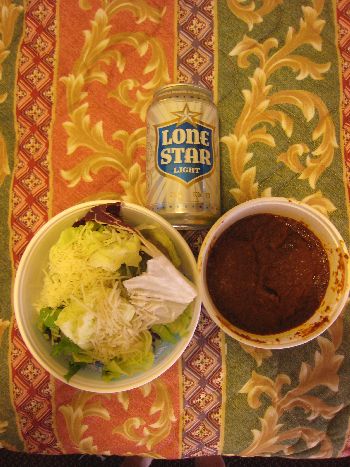
My humble motel meal: part of a bag of mixed greens with shredded Parmesan and Italian dressing, and canned chili - all washed down with cheap local beer.
My "dishes" are two discarded food containers I found and then cleaned up. My utensils are from the deli section of a super market.
A far cry from the "high on the hog" livin' I have had up to now.
Back to part one of Thursday's journey...
Day 20 - FINIS


